Kenwood NX-210 User Manual
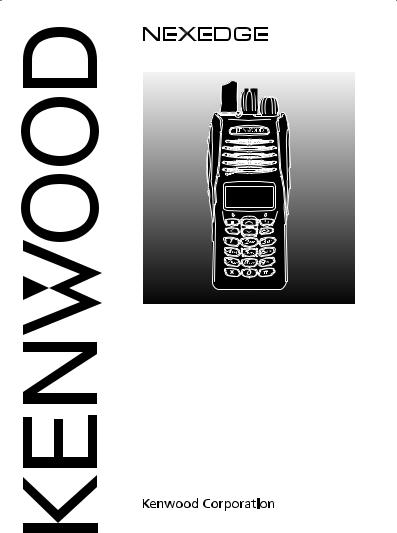
NX-210
VHF DIGITAL TRANSCEIVER
Instruction Manual
ÉMETTEUR-RÉCEPTEUR NUMÉRIQUE VHF
MODE D’EMPLOI
TRANSCEPTOR DIGITAL VHF
MANUAL DE INSTRUCCIONES
© B62-2152-00 (K2)
09 08 07 06 05 04 03 02 01 00

VHF DIGITAL TRANSCEIVER
NX-210
Instruction Manual
Terminal Descriptions
Universal connector
It is possible to use a resin-based cover for the Universal connector.
ENGLISH
NO. |
Name |
Description |
Impedance |
I/O |
|
|
|
|
|
|
|
1 |
SSW |
Ext/Int Speaker Switch Input |
High Impedance |
I |
|
|
|
|
|
|
|
2 |
SP+ |
BTL Output + for External Speaker |
8 Ω/ 16 Ω |
O |
|
|
|
|
|
||
3 |
SP- |
BTL Output - for External Speaker |
O |
||
|
|||||
|
|
|
|
|
|
4 |
MSW |
Ext/Int MIC Switch Input |
High Impedance |
I |
|
|
|
|
|
|
|
5 |
EMC |
External MIC Input |
1.8 kΩ |
I |
|
|
|
|
|
|
|
6 |
ME |
External MIC GND |
GND |
- |
|
|
|
|
|
|
|
7 |
PTT |
External PTT Input |
High Impedance |
I |
|
|
|
|
|
|
|
8 |
PF |
Programable Function Key Input |
High Impedance |
I |
|
|
|
|
|
|
|
9 |
OPT |
Man Down Input |
High Impedance |
I |
|
|
|
|
|
|
|
10 |
E |
GND |
GND |
- |
|
|
|
|
|
|
|
11 |
5V |
5V power supply output |
5V |
O |
|
|
|
|
|
|
|
12 |
TXD |
Serial Data Output |
CMOS |
O |
|
|
|
|
|
|
|
13 |
RXD |
Serial Data Input |
CMOS |
I |
|
|
|
|
|
|
|
14 |
NC |
Not used |
- |
- |
|
|
|
|
|
|
Antenna Terminal
50 Ω impedance
Battery Terminal
The battery terminal uses a spring plate.
The negative terminal connects to the chassis ground.
The battery is mounted on the rear side of the transceiver using a sliding mounting method.

Thank You
We are grateful you have chosen Kenwood for your land mobile radio applications.
This instruction manual covers only the basic operations of your NEXEDGE portable radio. Ask your dealer for information on any customized features they may have added to your radio.
NXDN™
NXDN™ is a protocol name for a new digital communications system using 4-level FSK technology which has been co-developed by Kenwood and Icom.
Notices to the User
Government law prohibits the operation of unlicensed radio transmitters within the territories under government control.
Illegal operation is punishable by fine and/or imprisonment.
Refer service to qualified technicians only.
SAFETY: It is important that the operator is aware of and understands hazards common to the operation of any transceiver.
The AMBE+2TM voice coding Technology embodied in this product is protected by intellectual property rights including patent rights, copyrights and trade secrets of Digital Voice Systems, Inc. This voice coding Technology is licensed solely for use within this Communications Equipment. The user of this Technology is explicitly prohibited from attempting to extract, remove, decompile, reverse engineer, or disassemble the Object Code, or in any other way convert the Object Code into a human-readable form. U.S. Patent Nos. #5,870,405, #5,826,222, #5,754,974, #5,701,390, #5,715,365, #5,649,050, #5,630,011, #5,581,656, #5,517,511, #5,491,772, #5,247,579, #5,226,084 and #5,195,166.

One or more of the following statements may be applicable:
FCC WARNING
This equipment generates or uses radio frequency energy.
Changes or modifications to this equipment may cause harmful interference unless the modifications are expressly approved in the instruction manual. The user could lose the authority to operate this equipment if an unauthorized change or modification is made.
INFORMATION TO THE DIGITAL DEVICE USER REQUIRED BY THE FCC
This equipment has been tested and found to comply with the limits for a Class B digital device, pursuant to Part 15 of the FCC Rules. These limits are designed to provide reasonable protection against harmful interference in a residential installation.
This equipment generates, uses and can generate radio frequency energy and, if not installed and used in accordance with the instructions, may cause harmful interference to radio communications. However, there is no guarantee that the
interference will not occur in a particular installation. If this equipment does cause harmful interference to radio or television reception, which can be determined by turning the equipment off and on, the user is encouraged to try to correct the interference by one or more of the following measures:
•Reorient or relocate the receiving antenna.
•Increase the separation between the equipment and receiver.
•Connect the equipment to an outlet on a circuit different from that to which the receiver is connected.
•Consult the dealer for technical assistance.
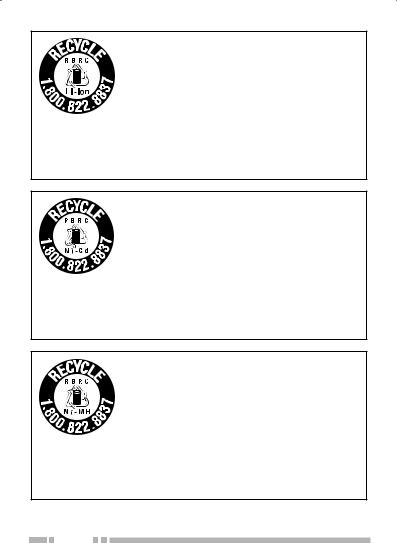
The RBRC Recycle seal found on Kenwood lithium-ion (Li-ion) battery packs indicates Kenwood’s voluntary participation in an industry program to collect and recycle Li-ion batteries after their operating life has expired. The RBRC program is an alternative to disposing Li-ion batteries with your regular refuse or in municipal waste streams, which is illegal in some areas.
For information on Li-ion battery recycling in your area, call (toll free) 1-800-8-BATTERY (1-800-822-8837).
Kenwood’s involvement in this program is part of our commitment to preserve our environment and conserve our natural resources.
The RBRC Recycle seal found on Kenwood nickel-cadmium (Ni-Cd) battery packs indicates Kenwood’s voluntary participation in an industry program to collect and recycle Ni-Cd batteries after their operating life has expired. The RBRC
program is an alternative to disposing Ni-Cd batteries with your regular refuse or in municipal waste streams, which is illegal in some areas.
For information on Ni-Cd battery recycling in your area, call (toll free) 1-800-8-BATTERY (1-800-822-8837).
Kenwood’s involvement in this program is part of our commitment to preserve our environment and conserve our natural resources.
The RBRC Recycle seal found on Kenwood nickel metal hydride (Ni-MH) battery packs indicates Kenwood’s voluntary participation in an industry program to collect and recycle Ni-MH batteries after their operating life has expired. The RBRC
program is an alternative to disposing Ni-MH batteries with your regular refuse or in municipal waste streams, which is illegal in some areas.
For information on Ni-MH battery recycling in your area, call (toll free) 1-800-8-BATTERY (1-800-822-8837).
Kenwood’s involvement in this program is part of our commitment to preserve our environment and conserve our natural resources.
ii

Precautions
•Do not charge the transceiver and battery pack when they are wet.
•Ensure that there are no metallic items located between the transceiver and the battery pack.
•Do not use options not specified by Kenwood.
•If the die-cast chassis or other transceiver part is damaged, do not touch the damaged parts.
•If a headset or headphone is connected to the transceiver, reduce the transceiver volume. Pay attention to the volume level when turning the squelch off.
•Do not place the microphone cable around your neck while near machinery that may catch the cable.
•Do not place the transceiver on unstable surfaces.
•Ensure that the end of the antenna does not touch your eyes.
•When the transceiver is used for transmission for many hours, the radiator and chassis will become hot. Do not touch these locations when replacing the battery pack.
•Always switch the transceiver power off before installing optional accessories.
•The charger is the device that disconnects the unit from the AC mains line. The AC plug should be readily accessible.
iii
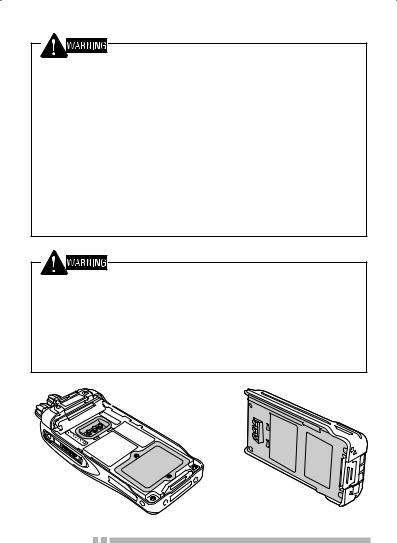
Turn the transceiver power off in the following locations:
•Near explosives or blasting sites.
•In aircrafts. (Any use of the transceiver must follow the instructions and regulations provided by the airline crew.)
•Where restrictions or warnings are posted regarding the use of radio devices, including but not limited to medical facilities.
•Near persons wearing pacemakers.
Turn the transceiver power off in the following locations, unless the model is specifically qualified for such use (Intrinsically Safe such as approved by Factory Mutual, CSA):
•In explosive atmospheres (inflammable gas, dust particles, metallic powders, grain powders, etc.).
•While taking on fuel or while parked at gasoline service stations.
•The orange seal on the reverse side of the transceiver is important with respect to the waterproof efficiency of the transceiver. Do not place stickers or other materials on or around the seal shown in the figure, or on the reverse side of the battery pack. Doing so will impair the waterproof efficiency of the transceiver and may cause it to break down. Additionally, in order to prevent damage to the seal, do not allow it to come in contact with foreign materials.

 iv
iv
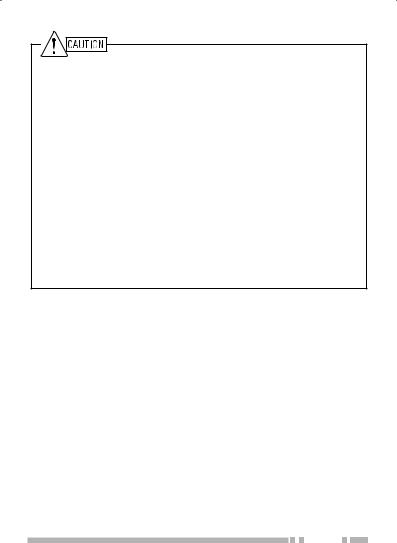
•Do not disassemble or modify the transceiver for any reason.
•Do not place the transceiver on or near airbag equipment while the vehicle is running. When the airbag inflates, the transceiver may be ejected and strike the driver or passengers.
•Do not transmit while touching the antenna terminal or if any metallic parts are exposed from the antenna covering.
Transmitting at such a time may result in a high-frequency burn.
•If an abnormal odor or smoke is detected coming from the transceiver, switch the transceiver power off immediately, remove the battery pack from the transceiver, and contact your
Kenwood dealer.
•Use of the transceiver while you are driving may be against traffic laws. Please check and observe the vehicle regulations in your area.
•Do not expose the transceiver to extremely hot or cold conditions.
•Do not carry the battery pack (or battery case) with metal objects, as they may short the battery terminals.
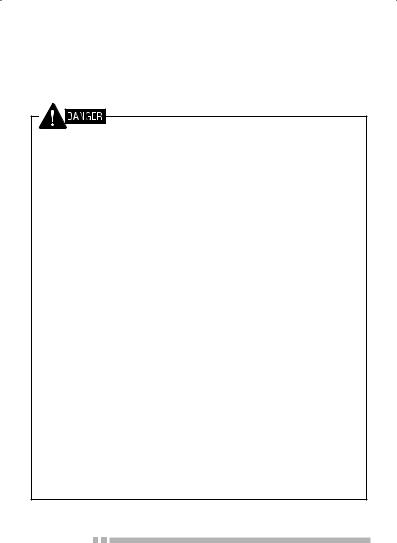
Information concerning the battery pack
The battery pack includes flammable objects such as organic solvent. Mishandling may cause the battery to rupture producing flames or extreme heat, deteriorate, or cause other forms of damage to the battery. Please observe the following prohibitive matters.
•Do not disassemble or reconstruct battery!
The battery pack has a safety function and protection circuit to avoid danger. If they suffer serious damage, the battery may generate heat or smoke, rupture, or burst into flame.
•Do not short-circuit the battery!
Do not join the + and – terminals using any form of metal (such as a paper clip or wire). Do not carry or store the battery pack in containers holding metal objects (such as wires, chainnecklace or hairpins). If the battery pack is short-circuited, excessive current will flow and the battery may generate heat or smoke, rupture, or burst into flame. It will also cause metal objects to heat up.
•Do not incinerate or apply heat to the battery!
If the insulator is melted, the gas release vent or safety function is damaged, or the electrolyte is ignited, the battery may generate heat or smoke, rupture, or burst into flame.
•Do not use or leave the battery near fires, stoves, or other heat generators (areas reaching over 80°C/ 176°F)!
If the polymer separator is melted due to high temperature, an internal short-circuit may occur in the individual cells and the battery may generate heat or smoke, rupture, or burst into flame.
•Avoid immersing the battery in water or getting it wet by other means!
If the battery becomes wet, wipe it off with a dry towel before use. If the battery’s protection circuit is damaged, the battery may charge at extreme current (or voltage) and an abnormal chemical reaction may occur. The battery may generate heat or smoke, rupture, or burst into flame.

 vi
vi

•Do not charge the battery near fires or under direct sunlight!
If the battery’s protection circuit is damaged, the battery may charge at extreme current (or voltage) and an abnormal chemical reaction may occur. The battery may generate heat or smoke, rupture, or burst into flame.
•Use only the specified charger and observe charging requirements!
If the battery is charged in unspecified conditions (under high temperature over the regulated value, excessive high voltage or current over regulated value, or with a remodelled charger), it may overcharge or an abnormal chemical reaction may occur. The battery may generate heat or smoke, rupture, or burst into flame.
•Do not pierce the battery with any object, strike it with an instrument, or step on it!
This may break or deform the battery, causing a short-circuit. The battery may generate heat or smoke, rupture, or burst into flame.
•Do not jar or throw the battery!
An impact may cause the battery to leak, generate heat or smoke, rupture, and/or burst into flame. If the battery’s protection circuit is damaged, the battery may charge at an abnormal current (or voltage), and an abnormal chemical reaction may occur.
•Do not use the battery pack if it is damaged in any way!
The battery may generate heat or smoke, rupture, or burst into flame.
•Do not solder directly onto the battery!
If the insulator is melted or the gas release vent or safety function is damaged, the battery may generate heat or smoke, rupture, or burst into flame.
•Do not reverse the battery polarity (and terminals)!
When charging a reversed battery, an abnormal chemical reaction may occur. In some cases, an unexpected large amount of current may flow upon discharging. The battery may generate heat or smoke, rupture, or burst into flame.
vii 

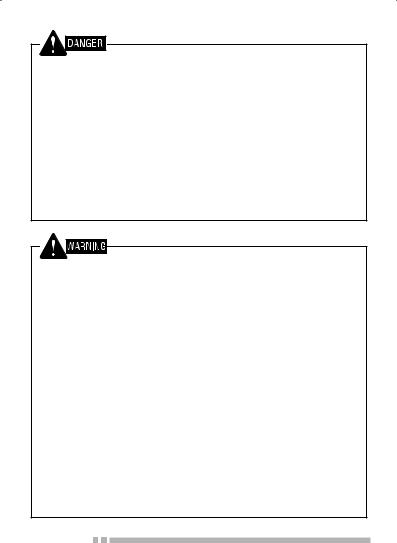
•Do not reverse-charge or reverse-connect the battery!
The battery pack has positive and negative poles. If the battery pack does not smoothly connect with a charger or operating equipment, do not force it; check the polarity of the battery. If the battery pack is reverse-connected to the charger, it will be reverse-charged and an abnormal chemical reaction may occur. The battery may generate heat or smoke, rupture, or burst into flame.
•Do not touch a ruptured and leaking battery!
If the electrolyte liquid from the battery gets into your eyes, wash your eyes out with fresh water as soon as possible, without rubbing your eyes. Go to the hospital immediately. If left untreated, it may cause eye-problems.
•Do not charge the battery for longer than the specified time!
If the battery pack has not finished charging even after the regulated time has passed, stop it. The battery may generate heat or smoke, rupture, or burst into flame.
•Do not place the battery pack into a microwave or high pressure container!
The battery may generate heat or smoke, rupture, or burst into flame.
•Keep ruptured and leaking battery packs away from fire!
If the battery pack is leaking (or the battery emits a bad odor), immediately remove it from flammable areas. Electrolyte leaking from battery can easily catch on fire and may cause the battery to generate smoke or burst into flame.
•Do not use an abnormal battery!
If the battery pack emits a bad odor, appears to have different coloring, is deformed, or seems abnormal for any other reason, remove it from the charger or operating equipment and do not use it. The battery may generate heat or smoke, rupture, or burst into flame.

 viii
viii
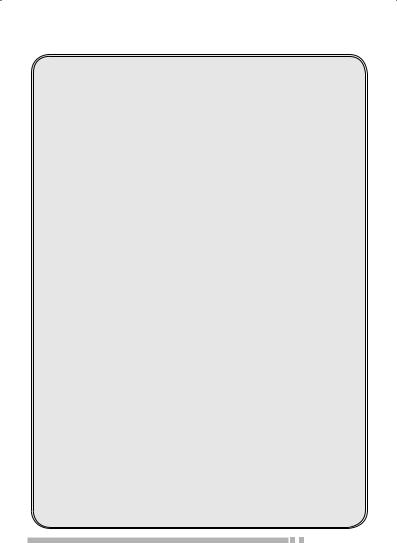
CONTENTS |
|
UNPACKING AND CHECKING EQUIPMENT............................... |
1 |
Supplied Accessories................................................................ |
1 |
PREPARATION ............................................................................. |
2 |
Installing/ Removing the (Optional) Battery Pack..................... |
2 |
Installing the (Optional) Antenna............................................. |
2 |
Installing the Belt Clip............................................................. |
3 |
Installing the Cap over the Universal Connector .................... |
3 |
Installing the (Optional) Speaker/ Microphone or Headset....... |
3 |
GETTING ACQUAINTED .............................................................. |
4 |
Display...................................................................................... |
6 |
PROGRAMMABLE FUNCTIONS.................................................. |
7 |
BASIC OPERATIONS.................................................................... |
9 |
Switching Power ON/ OFF....................................................... |
9 |
Adjusting the Volume............................................................... |
9 |
Selecting a Zone and Channel/Group ID................................. |
10 |
Transmitting........................................................................... |
10 |
Receiving................................................................................ |
11 |
MENU MODE............................................................................... |
12 |
Menu Access........................................................................... |
12 |
Menu Configuration................................................................ |
12 |
Character Entry.................................................................... |
14 |
SCAN........................................................................................... |
15 |
Temporary Channel Lockout................................................... |
15 |
Priority Scan......................................................................... |
15 |
Scan Revert........................................................................... |
16 |
Scan Delete/Add.................................................................... |
16 |
Priority-Channel Select......................................................... |
16 |
FleetSync: ALPHANUMERIC 2-WAY PAGING FUNCTION....... |
17 |
Selcall (Selective Calling).................................................... |
17 |
Status Message...................................................................... |
18 |
Short/Long Messages............................................................. |
19 |
GPS Report........................................................................... |
19 |
ix 

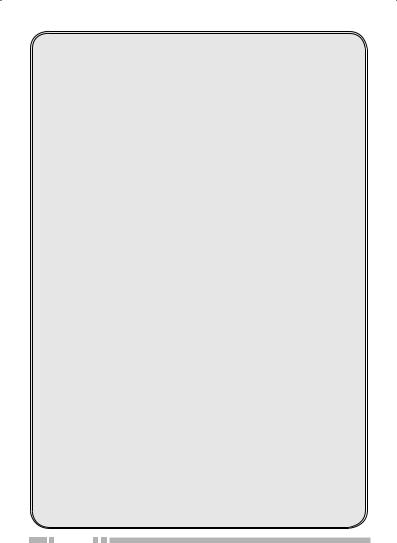
Advanced Operations......................................................... |
20 |
DTMF (Dual Tone Multi Frequency) Calls............................. |
20 |
Trunking Calls (Analog)......................................................... |
21 |
Emergency Calls.................................................................... |
22 |
Scrambler.............................................................................. |
22 |
Signaling................................................................................ |
23 |
Voice Operated Transmission (VOX)....................................... |
24 |
BACKGROUND OPERATIONS................................................... |
26 |
Clock..................................................................................... |
26 |
Vibrator................................................................................. |
26 |
Time-out Timer (TOT).............................................................. |
26 |
Battery Saver......................................................................... |
27 |
Key Lock................................................................................. |
27 |
Low Battery Warning............................................................. |
27 |
Signal Strength Indicator...................................................... |
27 |
Compander.............................................................................. |
28 |
Busy Channel Lockout (BCL)................................................. |
28 |
Control Channel Hunt........................................................... |
28 |
PTT ID................................................................................... |
28 |
VGS-1 OPTIONAL VOICE GUIDE & STORAGE UNIT............... |
29 |
Voice Recorder...................................................................... |
29 |
Voice Guide............................................................................ |
30 |

UNPACKING AND CHECKING EQUIPMENT
Note: These unpacking instructions are for use by your Kenwood dealer, an authorized Kenwood service facility, or the factory.
Carefully unpack the transceiver. We recommend that you identify the items listed in the following list before discarding the packing material. If any items are missing or damaged, file a claim with the carrier immediately.
Supplied Accessories
Belt clip. . . . . . . . . . . . . . . . . . . . . . . . . 1
•Screws for belt clip (3 x 8 mm). . . . . . . . . . . . . . 2
Universal connector cap. . . . . . . . . . . . . . . . . . |
|
1 |
|
• |
Dressing screw (preassembled). . . . . . . . . . . . . |
. 1 |
|
• |
Packing (preassembled). . . . . . . . . . . . . . . . |
. |
1 |
Instruction manual. . . . . . . . . . . . . . . . . . . . |
. |
1 |
|
